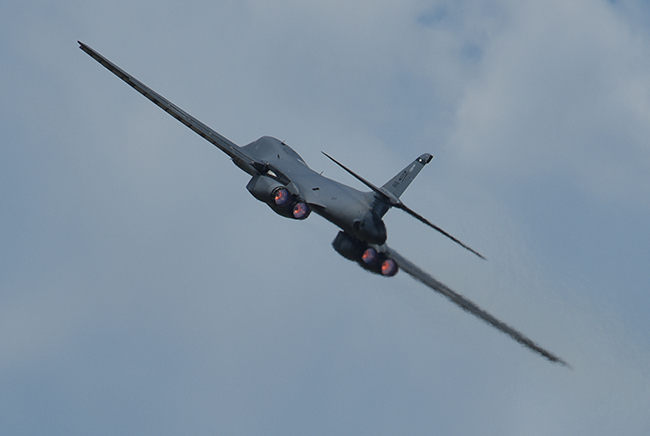
A B-1B Lancer assigned to the 9th Bomb Squadron takes off from Dyess AFB, Texas, May 8, 2018. Air Force photo by Amn. River Bruce.
The first B-1B bombers returned to flight this week following a nearly four-week stand-down due to issues with drogue chutes in the aircraft’s ejection seats.
Air Force Global Strike Command said in a Tuesday release that more aircraft are expected to return to flight in the near future as inspections and maintenance are completed, but the command did not say how many aircraft already had returned to flying status.
“We are proud of the tremendous efforts of our maintainers and aircrew flight equipment technicians in identifying, inspecting, and remediating any potential issues with the B-1B egress system,” Maj. Gen. Jim Dawkins, commander of 8th Air Force, said in a statement. “The aircraft are still safe to fly and we are confident that this stand-down has resulted in increased safety within the B-1B fleet.”
In late March, airmen discovered a problem with the rigging of the chute during a routine inspection. The problem appeared to be “procedural,” and was not related to an ejection seat problem that grounded the fleet last year, but maintenance and aircrew equipment personnel inspected the aircraft’s entire egress system during the stand-down to ensure the drogue chute system is safe.
AFGSC boss Gen. Timothy Ray told reporters recently he had approved a Time Compliance Technical Order for inspections of all B-1 egress systems after three issues involving the systems within about a year. He acknowledged the inspections are impacting the fleet’s readiness, but said they are necessary for flight safety.
“It’s not a young airplane; wear and tear is part of the things we find,” he said. As part of the plan, Dyess AFB, Texas, will inspect three B-1s per week and Ellsworth AFB, S.D., will inspect two.
The B-1 fleet has been “overextended” due to ongoing combat operations, so AFGSC pushed to get the aircraft out of the Middle East for increased maintenance, he added.